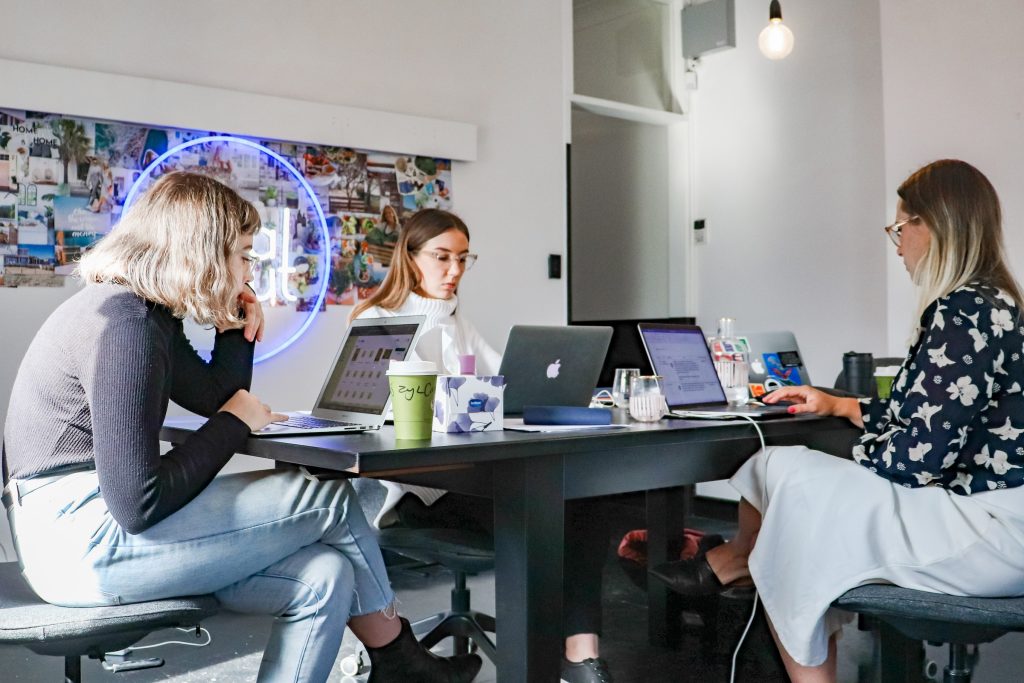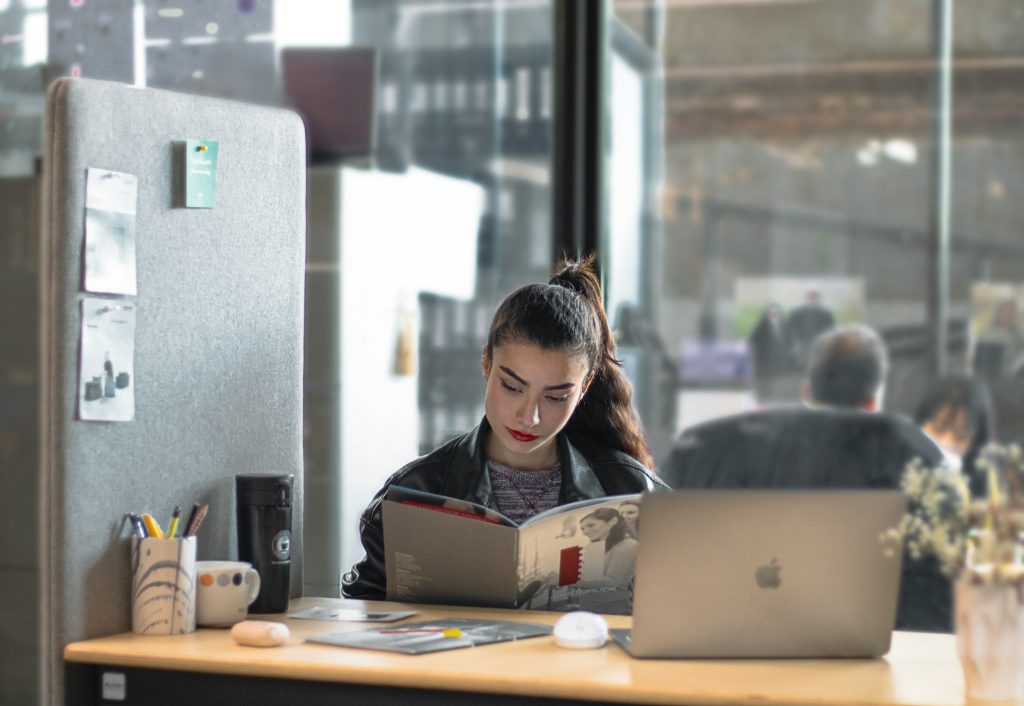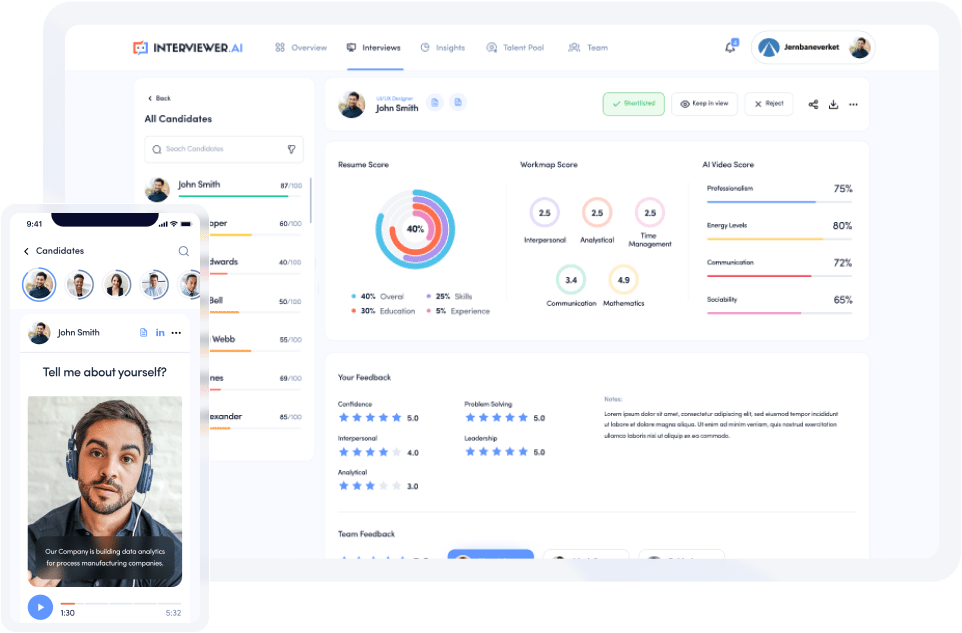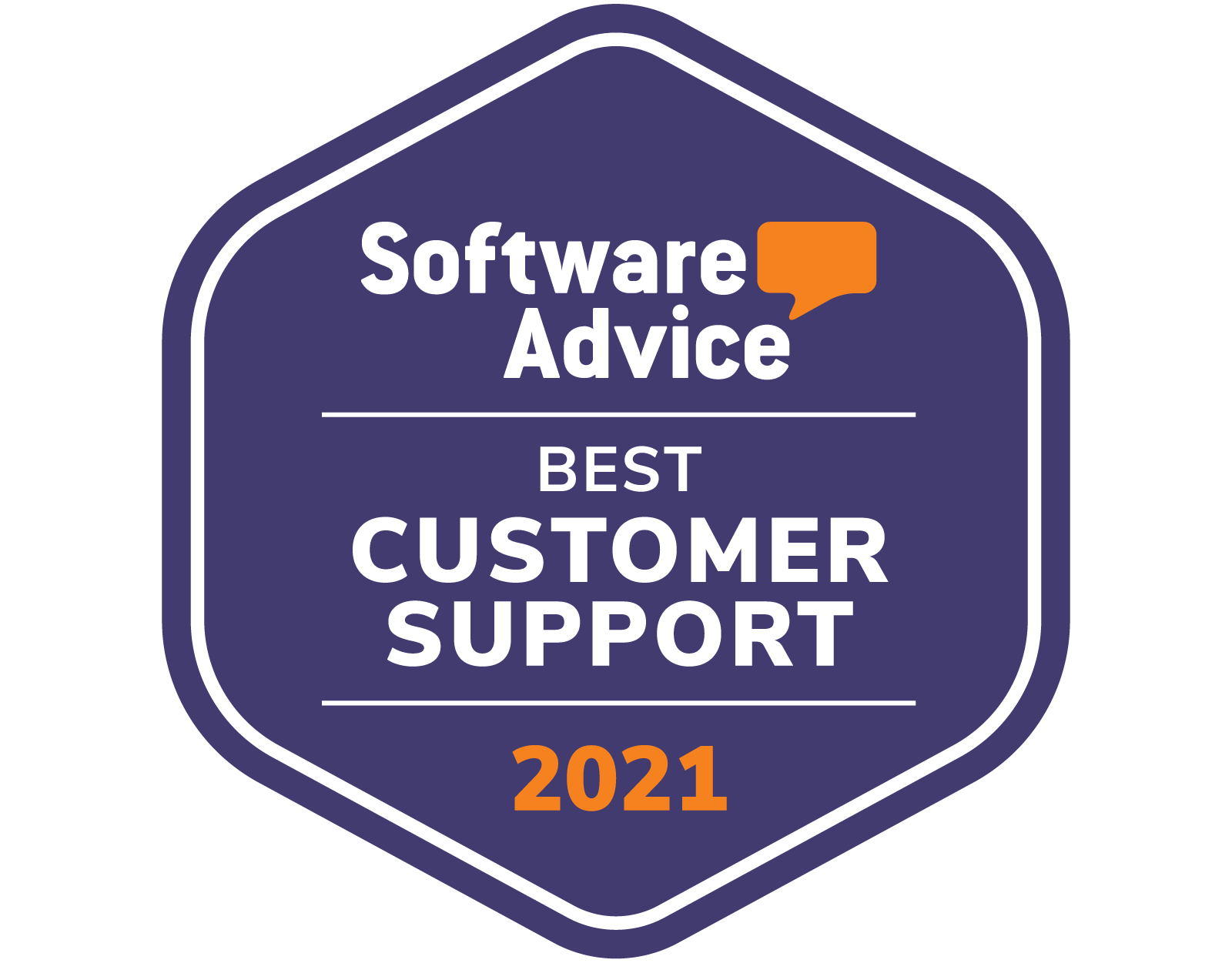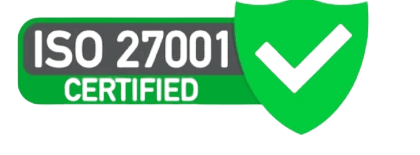As the world slowly returns to life post-pandemic, video interviews are here to stay. While they are seemingly simple video assessment AI software picks up on things that the normal interviewer might not. To ensure that you achieve the best results, here are 5 tips to help you improve your video interview skills.
Use good lighting
Good lighting is an integral part of receiving a call back after your interview. Using adequate lighting ensures that the interviewer can see your face properly and read your facial expressions as well.
More importantly, if your interview is reviewed by an AI scorer, you will automatically score lower if your lighting is poor. This is because AI assessment software reads the facial expressions of a candidate and scores them accordingly.
Thus, if your lighting is too dark the AI assessment will be unable to read your facial expressions and your rating will suffer heavily because of it. It is better not to risk it, instead: use bright lighting, Natural lighting is always a safe bet, but bright artificial lighting works as well.
Smile more
This tip is an easy fix, but will greatly improve your interview score.
This is a basic tip that most people employ during their interview. The problem is that most people start off smiling at the start of their interview, but as the interview progresses and the questions they are asked to answer become more difficult, they forget to smile.
The interviewee may begin to frown or make a concentrated face because they are lost in thought, and this can be read as negative. While a human interviewer likely wouldn’t think to give a candidate a lower score for their natural facial expression, the AI software does not yet have the capacity to identify that when discussing a difficult topic, the interviewer may make a concentrated face when thinking of their response.
Instead, the AI will read that you are unfriendly and give you a low score on the sociability scale. Hence, It is important to keep a friendly smile on your face, even when it feels unnatural.
Use the Full Amount of Allotted Time Given to Prepare
When video- interviewing asynchronously, it is customary for the platform to provide time to prepare for the question before actually recording your response. The time normally ranges anywhere from 30 seconds to a minute of prep time for any given question.
Now this doesn’t feel like a lot of time, yet many people still just read the question then click record, completely disregarding the prep time all together. This is a detrimental mistake. When doing an in-person interview, the interviewee is expected to answer the question almost immediately after receiving it, but this is not the case with asynchronous video interviews, so this should be fully taken advantage of.
Next time you video interview, read and reread the question, and formulate a complete response before clicking the record button. In doing so, you will appear confident and more prepared than those who do not follow this tip.
Make Eye Contact
Since you are looking at your reflection on a screen rather than another person, it can be quite difficult to remember this step. But eye contact is just as important in a virtual interview as it would be in an in-person interview.
When asked a difficult question, it is natural to look away while thinking of a response. However, as mentioned above, the AI software will score this tendency poorly because it reads lack of eye contact as a negative trait.
As a helpful tip, try to focus on your reflection on the screen. By keeping track of your facial expressions and mannerisms, you’ll simultaneously maintain eye contact with the camera.
Be Confident
Confidence is a characteristic that is equally important for in-person and virtual interviews; however, through the screen, it can be difficult for your charisma to shine through.
Many people tend to view virtual interactions as awkward, and this only becomes more difficult when interviewing asynchronously because there is nobody on the other end of the screen. This is particularly difficult for those who rely on social cues to guide them through their interactions. Such as, an interviewer smiling or nodding their head encouragingly when a candidate responds to a question.
Not having this encouragement can destroy an interviewer’s confidence and make them rethink if they gave the proper response. There is no easy fix for this, but it is important to remember to go with your gut feeling, even if you are unsure with your response, remember to speak clearly to give the appearance of a confident interviewer.
To conclude, video interviewing is about emphasizing your natural traits so that they can better shine through on camera. If you employ these five tips mentioned above, you are on the right track to becoming a strong video interviewee.
Get video-interview-ready with Interviewer.AI.
Be confident when you face your next virtual interview. Try our video assessments for mock and pre-interviews. Interviewer.AI is all about efficiency. The first and most important factor is being mentally prepared and we will help you build up your self-confidence. For a simple reason, trusting yourself is the bridge between your knowledge, experience, and personal background to the external world.
Interviewer.AI has a candidate-first approach. So you can easily record an introduction video or take mock interviews and see your AI Scores. Companies look for qualities like quick learnability and problem-solving skills. Learn more about how candidates can use Interviewer.AI for mock interviews.

Whitney Nwaneri is a sophomore at the University of Texas at Austin studying Psychology, and has an interest in the HR industry. She is currently interning in Singapore for Interviewer.AI during the summer of 2022. Besides work, she is very interested in reading elevated fantasy novels, trying out new recipes, and learning about other cultures.


